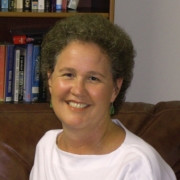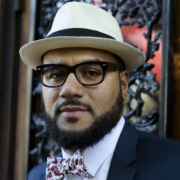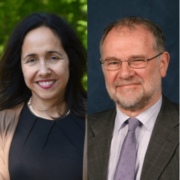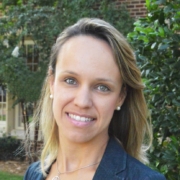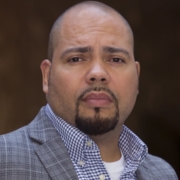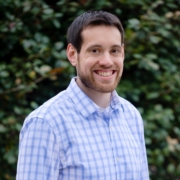Nikhil Goyal
Live to See the Day
Today we look at the high school dropout crisis and the dismantling of the social safety net in Philadelphia. My guest is Nikhil Goyal, a sociologist and policymaker who served as senior policy advisor on education and children for Senator Bernie Sanders.
Nikhil’s new book is Live to see the day: Coming of Age in American Poverty.
Citation: Goyal, Nikhil, interview with Will Brehm, FreshEd, 328, podcast audio, August 21, 2023.https://freshedpodcast.com/goyal/
Will Brehm 0:05
Nihil Goyal, welcome to FreshEd.
Nikhil Goyal 0:49
Thanks for having me.
Will Brehm 0:50
So, could you paint a picture for the listener who might not know too much about Philadelphia? Could you paint a picture of the Kensington neighborhood in Philadelphia?
Nikhil Goyal 1:01
Sure. So, Kensington is a neighborhood of Philadelphia; the poorest large city in the United States. It’s a neighborhood that holds the largest open air drug market on the east coast, where the most pure and cheapest heroin is sold. It’s also a neighborhood that has some of the highest poverty, incarceration and food insecurity rates in the city. It’s a place of great joy as well as a place of great suffering. And to me, it is a physical manifestation of the major crises facing the United States, from economic inequality, to mass incarceration, to deeply entrenched racial divides and inequalities. It’s an incredible place while still very much so affected by some of these social and economic policies.
Will Brehm 1:46
What first drew you to Kensington?
Nikhil Goyal 1:49
So, I first started visiting Kensington in 2015. I was interested in writing about the high school dropout crisis. And I reached out to a friend of mine who runs an organization called Big Picture Learning, which has dozens of public student-centered schools around the United States and the world. And so, Andrew Frishman had recommended I visit El Centro de Estudiantes, an alternative last chance high school in Kensington. And I thought I was gonna write a story about a couple of these kids, their teachers, and maybe interview a couple of folks in the community and call it a day. But it ended up becoming a much larger project. Over time, I realized that one, the high school dropout crisis is an issue that requires us to account for not just what’s happening in the school, but the larger political economy and the neighborhood at large. And it was also important to account for historical processes and legacies that help produce the conditions that exist in the neighborhood. And so, eventually, as part of my research, when I was in grad school and beyond, it became the centerpiece for how I was beginning to understand and grapple with sociological concepts and theories and ultimately the lives of these young people and their families.
Will Brehm 3:01
So, in Kensington then, what schooling options are available to families?
Nikhil Goyal 3:05
In Philadelphia, there’s traditional public neighborhood schools, there are charter schools, cyber charter schools, alternative schools. It’s kind of an entree of various options that families can send their children to. What often happens, especially for the charter schools, they’re usually for middle and high school students. And what you’ll find is the neighborhood school is the parents don’t feel comfortable sending their kid there, they might have low test scores, a lot of violence, underperformance among other issues, and so they’re looking for better options. And so, a child may apply to a charter school, and they may get in based on a lottery system or what have you. And then the alternative system, which is where I spend most of my time conducting research is a system usually that ends up getting kids after they’ve been pushed out of the traditional system, whether it’s the neighborhood schools or the charter schools. And so that’s usually it could be their second, third, or even fourth or beyond school that they’ve attended. And that’s where much of my research was conducted.
Will Brehm 4:06
And we’ll dig into that a little bit with looking at one individual that you really followed for quite some time. But just to give listeners a sense, how do these schooling options compare to neighborhoods next to, or near, Kensington that are also still in Philadelphia but are probably or might be predominantly white?
Nikhil Goyal 4:26
Sure. There’s a great inequality in American school financing. And you see that manifested, not just from the physical condition of school buildings, but the way teachers are paid, the type of curriculum that is offered, whether kids get recess or even access to a playground. And then obviously, some of the kind of pedagogical practices within classrooms themselves. Philadelphia, as I mentioned, is the poorest large city in America and has been for quite a number of years. And you can look at the surrounding suburbs of the city, look at low Lower Merion, for example, which spends tens of 1,000s of dollars more per pupil than the Philadelphia School District. And it’s very obvious when you actually spend time in those places that those are schools generally for affluent, largely white and Asian students, whereas the Philadelphia School System largely educates low-income kids, working class kids, African American, Latino, and white. And so, the populations that they serve are very different. And obviously, the types of experiences that young people have in each system are radically different. Jonathan Kozol, a great American education writer, wrote a book a number of years ago called Savage Inequalities, where he spent time looking at schools in East St. Louis and schools in leafy suburbs. There’s a great discrepancy that is found when you spend time in those places.
Will Brehm 5:49
And so that financial inequality, is that because of the way the funding model of school is based on local property taxes? Is that the issue?
Nikhil Goyal 5:57
Unlike many other countries of the world, the United States has generally, to its roots, has had a very local driven education system. Education is not mentioned as part of the Bill of Rights or in the Constitution. It’s generally been considered a state and local matter from the inception of the United States. And when compulsory schooling began in Massachusetts, and spread beyond that, in the 19 century, local property taxes became the basis for funding your local school. And that has remained with us ever since. So, in the United States, generally speaking, 45% to 47% of the school’s funding comes from local property taxes, another 45% to 47% comes from the state, and then about 8% comes from the federal government. And obviously, that depends state by state. Some states are more regressive, and they underfund public education and so the local property tax share ends up being larger. And other states have the reverse, the ones that fund public education better. It goes to show -think about that 8%. The federal government has a largely small role to play, especially in financing matters. You have the Title 1 program, which is a federal program that was originally designed to give funding to high poverty school districts. There’s a long-standing debate and some research to indicate that that’s not actually happening, it’s not being targeted most effectively. But there’s a small share, and it really goes down to the state and local level.
Will Brehm 6:26
Okay, so this is why we can start seeing some of these vast sorts of “savage inequalities” to use Jonathan Kozol’s term between neighborhoods and between schools based on these local property taxes. So, let’s turn to the schools and the people you were following. One of the students you followed over time was a student named Ryan. And we sort of first meet Ryan in a school. He’s goofing around with his buddies and youth gets the better of them, let’s say and they end up lighting a trashcan on fire inside the school. What happens to Ryan as a result of that moment in his life?
Nikhil Goyal 8:04
Sure. You know, I start the book off with that scene of Ryan and his friends starting a fire in the trash can. They were in middle school at the time. Ryan was 12 years old, just a few weeks shy of turning 13. And it was just a harrowing experience for this young person. He eventually gets interrogated by school resource officers and school administrators, along with a couple other of his classmates. And then he and another boy get arrested by the Philadelphia police officers and get sent to juvenile detention centers. One in the city itself, and then one outside in the suburbs later on. It is just remarkable to think about the shame that this young person had to endure. All the way from his experience where a guard gives him underwear that is stained, to the fact that he has to eat food that is completely unsanitary, to the fact that he might have to shower in a bathroom where there are no curtains. The examples of shame and indignities accumulate over the course of Ryan’s time in juvenile detention. And then he wasn’t even able to speak with his mother and didn’t even know if his mother was going to pick them up. And so, Ryan, eventually goes through the juvenile justice system, comes back home goes through a cycle of juvenile court hearings, and then eventually he gets expelled from Grover Washington, his middle school and gets sent and transferred to an alternative disciplinary school called Community Education Partners, which is run by a for profit company, and there he experiences and endures an incredibly dehumanizing, criminalizing experience in that educational setting.
Will Brehm 9:48
The punishment was so extreme for a child, right? To call the police and then for the child to be treated almost like an adult in a prison system. I mean, it was sort of surreal to imagine. Even reading it was surreal. I can’t imagine what it actually was like to go through as a child. And as you said, he ends up in this school, the Community Education Partners (CEP). I am from the United States, but I never heard of CEP. How widespread is CEP. As you said, it’s a for profit alternative school but is this a Philadelphia only thing or is this a system that is much wider?
Nikhil Goyal 10:26
CEP no longer exists but when it did exist in the 90s, and into the 2000s it was a for profit company that operated disparate schools around the country. And basically, the CEOs, and the executives gave this very clear pitch to school administrators and politicians that you have kids who are disruptive, and they misbehave. Let’s take that burden of educating them off your plate and we’ll deal with them. We’ll put them in a school where they’re segregated away from the general population, and we will make sure that they are no longer messing up your test scores and your educational performance and your attritional classrooms. And so, CEP got its first couple of contracts in Texas, that’s where it really got its footing. Houston and Dallas got multimillion dollar contracts to operate alternative disciplinary schools. And then the model was exported around the country. You know, Philadelphia was one of the next destinations and they gave CEP a contract in the 2000s. It was the first contract that was given to an alternative for profit school, and they began getting students. Students were funneled from juvenile detention into CEP, they were funneled from traditional schools, and they were expelled and sent to CEP. And then they set up more and more schools over time creating this pipeline in Philadelphia. And Ryan was on the back end of CEPs tenure in Philadelphia in 2009 or so. And he was put into an environment where kids walk with their hands behind their backs, they have uniforms, they’re treated literally as prisoners, it is incredibly dehumanizing -allude to being treated like an adult. I don’t even say that adults should be treated in this way, let alone a child. That’s what I would argue. And so, the ways in which that they were subjecting these young people to these very punishing rituals and routines, I argue, is a form of not just racism and exploitation, but a way to create pariahs in our society as people who are exiled and treated as disposable and not as fully human. And I think that Ryan, unfortunately, became a textbook victim of those structures.
Will Brehm 10:26
So, what was his experience like at CEP?
Nikhil Goyal 10:27
He talks about the constant fights. Almost every day, there was a fight at school involving a student or a staff member, and the staff members did very little to intervene and prevent that from happening. He talked about the very rote instruction. Just copying lessons from a board and filling out packets of material. There was no really engaging learning that was happening. And also, I just want to mention, they were stuck in -they call them communities. So, you entered a community in the morning, and you left the community at the end of the day. There was no freedom of movement. It was designed to keep people in one place. Similar to, as you might imagine, in a jail or prison. Keep people in a set location. I argue that it was a form of warehousing. Here’s a contract, let’s warehouse these kids and we’ll deal with them. Ryan talks a lot about the abuse and the violence that he was subjected to during the course of the months he was at the school.
Will Brehm 13:34
So, I don’t want to give away the whole story about Ryan but eventually, lots of twists and turns as you sort of recount in the book. But eventually Ryan ends up at this other alternative school that you mentioned at the top of his show, called El Centro, I think is the name. What is El Centro? And how is it different from CEP as an alternative school?
Nikhil Goyal 13:56
So, where CEP has metal detectors and school resource officers, also known as police officers for educational settings, punitive zero-tolerance discipline, no freedom of movement, uniforms hypercriminalized environments. El Centro was radically different. No security guards, no metal detectors, not required uniform. They had instead restorative justice, small classes, a responsive school climate, real, authentic relationships between students and teachers and staff, a real robust counseling service and opportunities for young people to work hand in hand with resiliency specialists and restorative justice specialists. It was a place where young people could feel safe, they could feel respected and where their voices were heard. They had a lot of autonomy over the types of projects and educational experiences that they engaged in. El Centro used the community and the city of Philadelphia as their classroom. Two days a week kids would spend time in internships, and businesses, and museums, and libraries, and courtrooms; all types of public institutions and spaces for them to gain social capital, get job training skills, and learn how to operate within a labor market. And it’s very driven by Big Picture Learning’s approach of real-world education. If we’re going to prepare young people for the real world, why not at least expose them to it and let them be embedded in it from an early age? And these were young people that were dealing with clear educational challenges. They were coming in very far behind on grade level in reading and math, and they racked up dozens and dozens of absences in their previous school years and experiences. These were students who were not your generally high performers. You were dealing with a population that was already, I would say, educationally traumatized, that had dealt with a lot of educational trauma and instability. And they’re all in one place that you have to manage and try to help these students for a short period of time that they were at the school until they hopefully graduated.
Will Brehm 16:00
So, what was Ryan’s experience like at El Centro?
Nikhil Goyal 16:03
He talked about just the fact that he no longer felt like he was a criminal in the school. And that was a point and a comment that many students made to me. “I don’t feel like I’m in jail when I’m at this school”. A number of students had come from schools like CEP and Mastery Charter School, ones, where they have very punitive zero-tolerance discipline, stalking their every move. And El Centro was very different. And so, Ryan gets into friendships with his advisors, a.k.al his teachers and he begins to really unpack the struggles and experiences of his life in restorative circles, morning circles, they have them with his peers. And then his internships where he began to spend time in the community and meet and engage with mentors. Those were the types of experiences that really engaged him and showed him that school could be different. It could be a place where you actually enjoy going to every day. Later on in the book, I talk about some of the struggles at El Centro and how life gets in the way. His girlfriend gets pregnant, and then he’s dealing with his mom having breast cancer and his stepfather getting arrested after selling drugs on the streets. There’s a lot of turbulence in his life that derail his experience in school, and I talked about his troubles and the fact that it took him many, many years to ultimately graduate high school. And so, I talked about that quest for Ryan and a number of youth as they try to get this very critical credential, that at least the way they view a high school diploma, and just the struggles that are along the way that they have to endure.
Will Brehm 17:36
There was a really moving part where Ryan gave a public speech for the first time in support of El Centro not to be closed down and he spoke about what the school meant to him. But it really wasn’t even about necessarily what he was saying but it was about this opportunity to speak publicly and how that was a rather empowering moment, it seemed like, for him to realize that he could be part of social change.
Nikhil Goyal 18:02
There’s a scene in the book where Ryan testifies before the Philadelphia City Council. El Centro, and other alternative schools in the city were on the chopping block. It has been the case in Philadelphia for a number of years, there was a threat of budget cuts, and the alternative schools were at risk of being fully eliminated. And so, there was a show of force from the entire network where students, and teachers, and staff, and parents went down to City Hall and protested the pending closures. And Ryan stood up. First, this teenager standing up in City Hall and telling them just a few years after going through the ordeal at Grover Washington and CEP that how dare you try to close the school? This is the first time I’ve ever enjoyed going to school. And I don’t feel like a prisoner at this school, I feel respected. I’ve made friends, I’ve become close with my advisors. The idea that I would have to go to a new school next school year and try to find a new school, it just sounds incredibly stressful, and one where I would never want to have to deal with because it’s unlikely that I would find another school that would fit my very unique needs. And so, he talks about his experience at El Centro in this testimony. I was just blown away by it. And not just his speech but other students talking about how much pride they felt as students. And there’s this quote in that section from David Bromley, who founded El Centro, and he was remarking that when he saw his students at City Hall, he was saying that I’ve never seen this many students in the actual school building than they are today. But it goes to show how much ownership they felt over their school and the pride that they had.
Will Brehm 19:49
Just through Ryan’s schooling experience that you document his two vastly different experiences between CEP and El Centro. It’s just so strange that one school system, the Philadelphia School System, could have such vastly different alternative schools operate simultaneously. Like how on earth did that happen? Because they seem to be just polar opposites.
Nikhil Goyal 20:15
That’s such a good point, actually because it is remarkable thing about. You have in the same system, a school like CEP and a school like El Centro. And I think it draws from the alternative schools’ relationship with the school district. You have charter schools, which are their kind of own entity and body, and they have their own set of regulations. But the alternative schools, their providers have been given contracts by the district. And so, a number of them could be for profit, or they could be nonprofit, like Big Picture. And so, I think that gives way to the diversity of options. And you can even see that in the system today with the more progressive student-centered approach like El Centro, and the more punitive approach, like Mastery Charter School. So, it really, I think, depends on the provider. The other point I would make is that I think the administrators of the school district have given that freedom to providers, and I think there’s been a lot of -to me, that is a critique of their decision making where they have allowed this kind of wild west of alternative school providers to just operate for many, many years. And CEP should have never existed in Philadelphia point blank. It should have never existed in Philadelphia, or any city in this country. And even other schools, I would even dare to say that the punitive ones in Philadelphia should not exist because they are criminalizing children, they are pushing them out, and they are only preparing them either for incarceration or low wage employment that is docile in nature. I think they’re doing a great disservice to the children in Philadelphia and their families. And so, I think there’s a lot that they can learn in terms of emulating the practices of El Centro, not just in the alternative system but frankly, well before the children even get to the alternative.
Will Brehm 22:03
And so, in Philadelphia today, are there alternative schools still in existence?
Nikhil Goyal 22:07
Yes. The same system is still in place as it’s existed for the past 15-20 years.
Will Brehm 22:12
Is El Centro still there?
Nikhil Goyal 22:13
Yes. El Centro is still there. It has moved from its location at Dauphin Street in Kensington and has moved a little bit north. They’ve been going through a series of relocations. They were a little bit further north, and now they’re going to move again. And so, they’ve been kind of all over North Philly but still thriving. And one point just to mention is Karem, formerly known as Emanuel, is a staff member at El Centro. They are overseeing the internship and real-world learning experiences at the school.
Will Brehm 22:41
So, near the end of your book, you have this question that you raise, I’m going to just read it out. It says, “How does multiracial liberal democracy reconcile with the violence meted out against people who live in the Kensington’s all over the United States”? So, how does it. How does liberal democracy do that?
Nikhil Goyal 22:58
I think it’s a question I pose because the conditions in Kensington -if we are to truly reckon with them, and what they represent- it requires us to think about; how does these zones of abjection, these zones of great suffering, exist in a country that prides itself as a land of freedom and opportunity? Because those two things are very antithetical, there’s a conflict there, right? And I think that it goes to a question of; how truly liberal and how truly democratic is this country if some people are condemned to lives of great suffering and misery, and other people get to live lives of dignity and opportunity. And you can just see this so clearly in Philadelphia. I start the book off with a portrait of Society Hill, a leafy, very wealthy white neighborhood just a few miles south of Kensington, where children live up to the age of 87-88 compared with Kensington where kids live up to the age of 71. There’s just a massive stark contrast, not just in life expectancy, but on all health and economic indicators, and just a few miles away. And I think that should give us great pause about how we talk about political concepts of liberal democracy, when those two situations are literally almost side by side. And what that means for what we need to do as Americans to demand upon the government to provide a basic social safety net for all our people, not just for those who are wealthy and well off.
Will Brehm 24:33
Well, Nikhil Goyal, thank you so much for joining FreshEd. Congratulations on your new book. It really was a fantastic read and I recommend it to everyone to just get a beautiful portrait into what schooling is like in some deeply impoverished areas and what choices that students and parents and families have to make to navigate this complex, awful system that has been created. So, thanks so much for joining FreshEd.
Nikhil Goyal 24:56
Thank you so much for having me.
Want to help translate this show? Please contact info@freshedpodcast.com
Related Author Publications/Projects
Live to see the day: Coming of age in American poverty
One size does not fit all: A student’s assessment of school
Mentioned Resources
Jonathan Kozol – Savage Inequality
How are public schools funded?
What is Title I and how it is used to fund schools Title I program
Recommended Resources
Analysis of school funding equity across the US and within each state
Distribution of public school funding sources in the US
Funding public schools: Politics and policies
Funding public schools in the US and Indian country
Trapped by the “Walmart of Heroin”
Last chance high: Beautiful band of misfits fight to graduate
El Centro de Estudiantes: One student at a time
Restorative justice: Pedagogy, praxis and discipline
What can be learned from Philly’s diverse provider model of school management
Mobilizing public alternative schools for post-neoliberal futures
Alternative education for disruptive youth
Innovation in the Philadelphia school system
Private sector involvement in public education in Philadelphia public schools
Have any useful resources related to this show? Please send them to info@freshedpodcast.com

